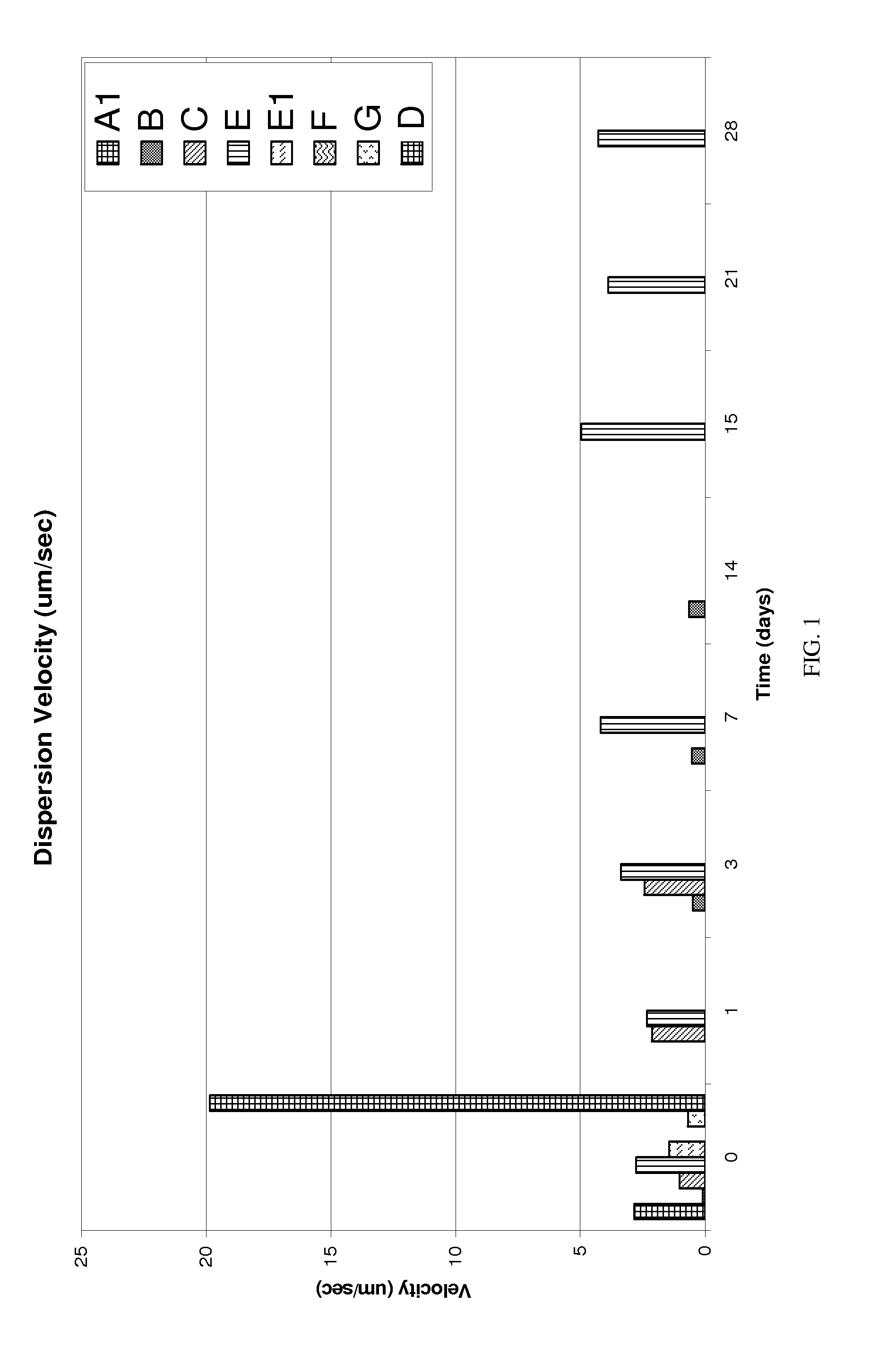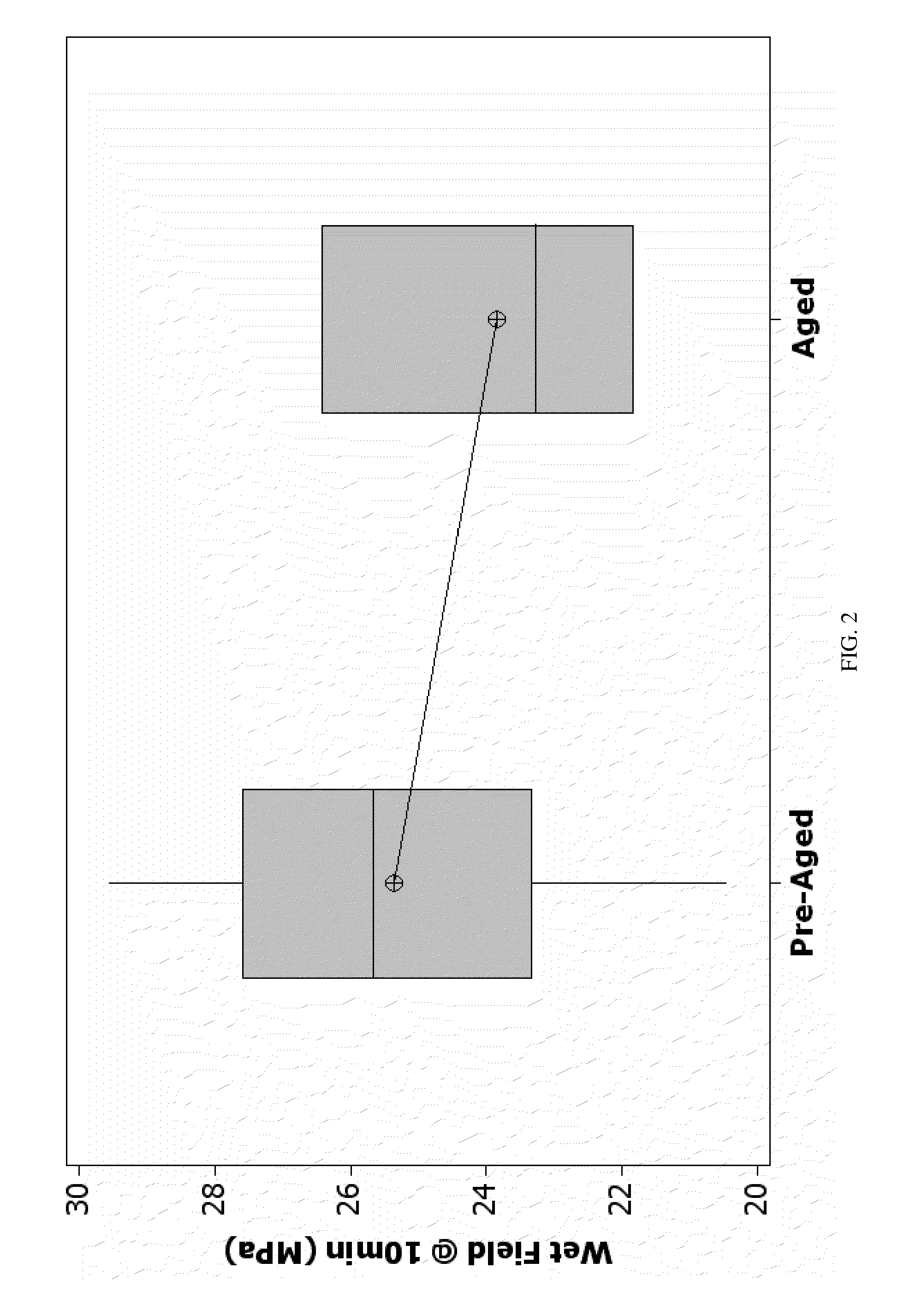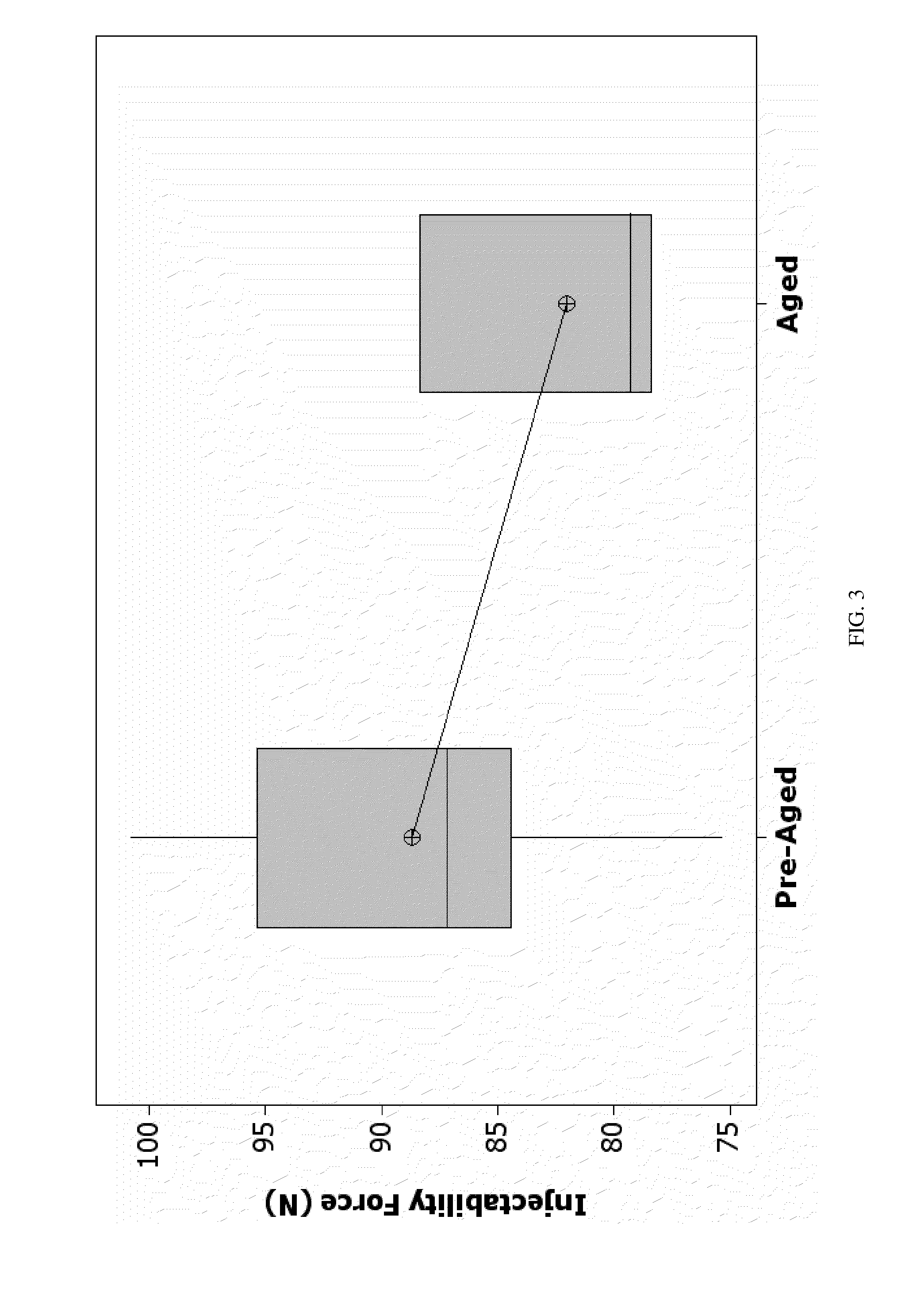Post irradiation shelf-stable dual paste direct injectable bone cement precursor systems and methods of making same
a precursor system and dual-particle technology, applied in the field of bone cement, can solve the problems of difficult use and cost ineffective, time-consuming manual system, user dependent/sensitive, etc., and achieve the effect of reducing moisture and air leakag
- Summary
- Abstract
- Description
- Claims
- Application Information
AI Technical Summary
Benefits of technology
Problems solved by technology
Method used
Image
Examples
example 1
[0116]
Mean Particle Size (μm) / MeanPaste TypeMaterial% w / wMolecular Weight (Mw)Acidic AqueousMCPM11.6040-60 μmPasteDCPA58.04 1-12 μmWater (WFI)18.59Citric Acid7.45MonohydratePEG1.2120k MwGlycerol1.33PVP1.7858k MwTOTAL100.00Alkaline Non-TTCP57.6310-30 μmaqueous PasteTTCP14.1230-80 μmPropylene Glycol24.86Tween 801.13PEG2.2620k MwTOTAL100.00
example 2
Examples of Various Acidic Aqueous Pastes
[0117]
FormulationPasteMean Particle sizeFamilyWeights(μm) / Mean MolecularReferenceMaterial(grams)weight (Mw)AMCPM10.28 40-60 μmDCPA51.42 1-12 μmWater17.38TSCD0.95150-220 μmCAM6.96Glycerol0.36PEG0.9320K MwBMCPM10.00 40-60 μmDCPA50.00 1-12 μmGlycerol0.36SPM0.5Water15.02CAM6.01PEG1.4320 kMwPVP3.4758k MwCMCPM10.00 40-60 μmDCPA50.00 1-12 μmGlycerol1.2SPM25.0Water16.01CAM6.41PEG1.6620k MwPVP2.2558k MwDMCPM10.0 40-60 μmDCPA50.0 1-12 μmWater19.45CAM7.87HEC0.281.3 × 106 MwEMCPM11.60 40-60 μmDCPA58.04 1-12 μmWater (WFI)18.59CAM7.45PEG1.2120k MwGlycerol1.33PVP1.7858k MwFMCPM10.0 40-60 μmDCPA HS II54.98 1-12 μmSPM0.5Water40.0CAM14GMCPM10.0 40-60 μmDCPA HS II50.0 1-12 μmPhosphoric Acid0.585%Water100.0CAM40.04PVP C3014.0
example 3
Examples of Various Alkaline Non-Aqueous Pastes
[0118]
FormulationPasteMean Particle size / FamilyWeightsMean Molecular weightReferenceMaterial(grams)(Mw)A1TTCP48.010-30 μmTTCP12.030-80 μmPropylene Glycol20.93Span 800.92PEG1.8420k MwB1TTCP48.010-30 μmTTCP12.030-80 μmPropylene Glycol20.93Tween 800.92PEG1.8420k MwClTTCP60.010-30 μmPropylene Glycol22.67HEC0.331.3 × 106 MwD1TTCP57.6310-30 μmTTCP14.1230-80 μmPropylene Glycol24.86Tween 801.13PEG2.2620k MwE1TTCP48.010-30 μmTTCP12.030-80 μmGlycerol9.0PEG10.020k MwTriacetin90.0
[0119]The dual pastes containing precursor for bone cement of the present invention were subjected to an array of qualification tests to verify that they meet the performance requirements. The dual pastes system of the present invention was analyzed for long term stability.
[0120]Long term stability may be measured by any technique or using any criteria deemed appropriate. In accordance with one such technique, a sample of the material or materials constituting the paste is...
PUM
| Property | Measurement | Unit |
|---|---|---|
| mean particle size | aaaaa | aaaaa |
| mean particle size | aaaaa | aaaaa |
| particle size | aaaaa | aaaaa |
Abstract
Description
Claims
Application Information
 Login to View More
Login to View More - R&D
- Intellectual Property
- Life Sciences
- Materials
- Tech Scout
- Unparalleled Data Quality
- Higher Quality Content
- 60% Fewer Hallucinations
Browse by: Latest US Patents, China's latest patents, Technical Efficacy Thesaurus, Application Domain, Technology Topic, Popular Technical Reports.
© 2025 PatSnap. All rights reserved.Legal|Privacy policy|Modern Slavery Act Transparency Statement|Sitemap|About US| Contact US: help@patsnap.com



